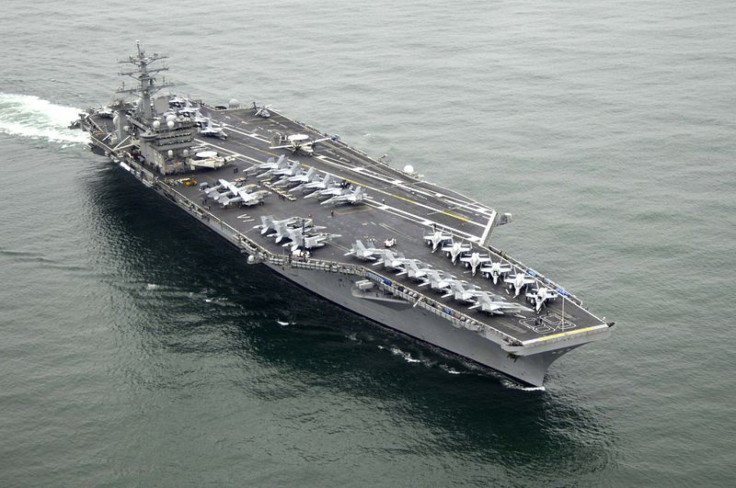How The Navy Might Spin Seawater Into Jet Fuel

Water, water everywhere, and not a drop to drink – but maybe a drop of alternative fuel? The U.S. Navy is hoping next-generation technology will let it replace petroleum fuels with something much more accessible and abundant: seawater.
"If they made fuel at sea," Naval Research Laboratory chemist Heather Willauer told NextGov this week, "they wouldn't be buying it."
Hydrocarbon fuel is, as the name suggests, made up of hydrogens and carbons. The first step to powering ships and planes with seawater is extracting carbon dioxide (CO2) from seawater. There’s actually a lot of CO2 dissolved in the ocean – at a concentration 140 times greater than in the air, in fact. NRL’s way of capturing carbon involves a three-chambered cell that applies electricity to seawater. This cell pulls out carbon dioxide and also produces hydrogen.
Next, the team uses a two-step process to combine the CO2 and hydrogen gases into a liquid soup of hydrocarbons. An iron-based catalyst converts both carbon dioxide and hydrogen gas into a type of hydrocarbon called an olefin (without the catalyst, you end up with a lot of wasteful methane production). For the second step, Navy chemists convert olefins to a jet fuel precursor through a process known as oligomerization – combining little links of molecules called monomers into a longer, more complex chain called a polymer.
Challenges remain, of course. The initial part of the process does gobble up a lot of energy, and while the technique has become more efficient in recent years, NRL’s carbon capture methods could still be more efficient, Willauer told NextGov.
In the fiscal year of 2011 alone, Navy vessels at sea used nearly 600 million gallons of fuel, according to the NRL. The Navy has set a goal of reducing its petroleum use by half by 2015.
In a 2012 analysis published in the Journal of Renewable and Sustainable Energy, Willauer and her colleagues estimated that jet fuel could be made at sea for anywhere from $3 to $6 per gallon. While that’s slightly more expensive than what the Navy has been paying for fuel, it may not be for long.
“In nine years, the price of fuel for the Navy could be well over the price of producing a synthetic jet fuel at sea which would not incur the costs associated with logistical storage and delivery,” Willauer and colleagues wrote.
If the technology pans out, every Navy ship might be able to make its own fuel. Ships wouldn’t have to be refueled by oil tankers – a rough proposition in stormy weather or in battle.
“A ship’s ability to produce any significant fraction of the battle group’s fuel for operations would increase the Navy’s operational flexibility and time on station by increasing the mean time between refueling,” the NRL team wrote.
Pulling carbon dioxide out of the ocean to make jet fuel could also have an additional environmental boon, science writer David Biello noted at Yale Environment 360: reducing the trend of ocean acidification, which is caused by increased levels of CO2 in the ocean and has a range of effects on marine life, including making it harder for shellfish and coral to build their shells.
© Copyright IBTimes 2025. All rights reserved.





















